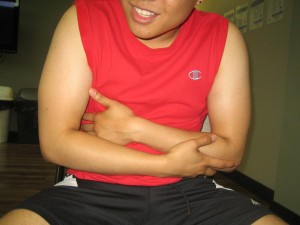It is important to note that moldy bread might not be considered suitable for lunch but for some particularly the homeless, this can be an option as a meal. The consumption of moldy foods including bread can be a health risk since the individual might be ingesting mycotoxins or the fungal poisons. There are certain strains of mold that can trigger food poisoning which can make the individual ill and experience fever, abdominal cramps, diarrhea, nausea and vomiting.
What are the types?
Always bear in mind that there is no guarantee that only a particular chain or type of mold thrives on bread. There are several cases in which humans have consumed moldy bread and either end up sick or died from doing so. Depending on the strain of mold that grows on the loaf of bread, it can contain gangrenous ergotisms, Stachybotrys chartarum, alimentary toxic aleukia or aflatoxicosis. These are just some of the bacterium or fungi that can grow on bread products.
Just remember that this does not necessarily mean that every mold is dangerous. Certain types of molds such as penicillum camembertii, fusarium venenatum, penicillum roquefortii and aspergillus oryzae are often used as food cultures for certain foods such as cheeses and they are generally harmless.

How the mold spreads
The moment mold is noticed on bread, it is not just isolated to the area that is visible. It is important to note that bread is porous and by the time you notice the mold on the bread, it is likely that the whole piece or loaf is already contaminated by the mold. There should be a high number of mold spores present in the bread for it to be noticeable. Mold usually thrives well in dark, warm areas or areas where there is a lot of moisture. Bread that has been stored for a long time will surely have mold.
Poisoning
Depending on the type of mold that grows on the bread, the individual might develop food poisoning or a deadly food-borne condition. It is important to note that some of these food-borne ailments including salmonella can be managed while others particularly Stachybotrys chartarum can lead to the irritation of the mouth, throat and nose that can further progress into shock, hemorrhage, necrosis of the skin and even death. For mild cases of food poisoning, you can learn the appropriate measures to carry out by enrolling in a first aid course today.
Considerations to bear in mind
The individual should avoid eating any foods that poses as a health risk or threat to the health. Foods that contain mold or has reached beyond their expiration date should be avoided and disposed of properly. Even though not all molds are harmful to the health, it is better not to take any chances. If you find moldy bread in the refrigerator or pantry, it is best not to eat it anymore since you never know what type of mold developed on it.
